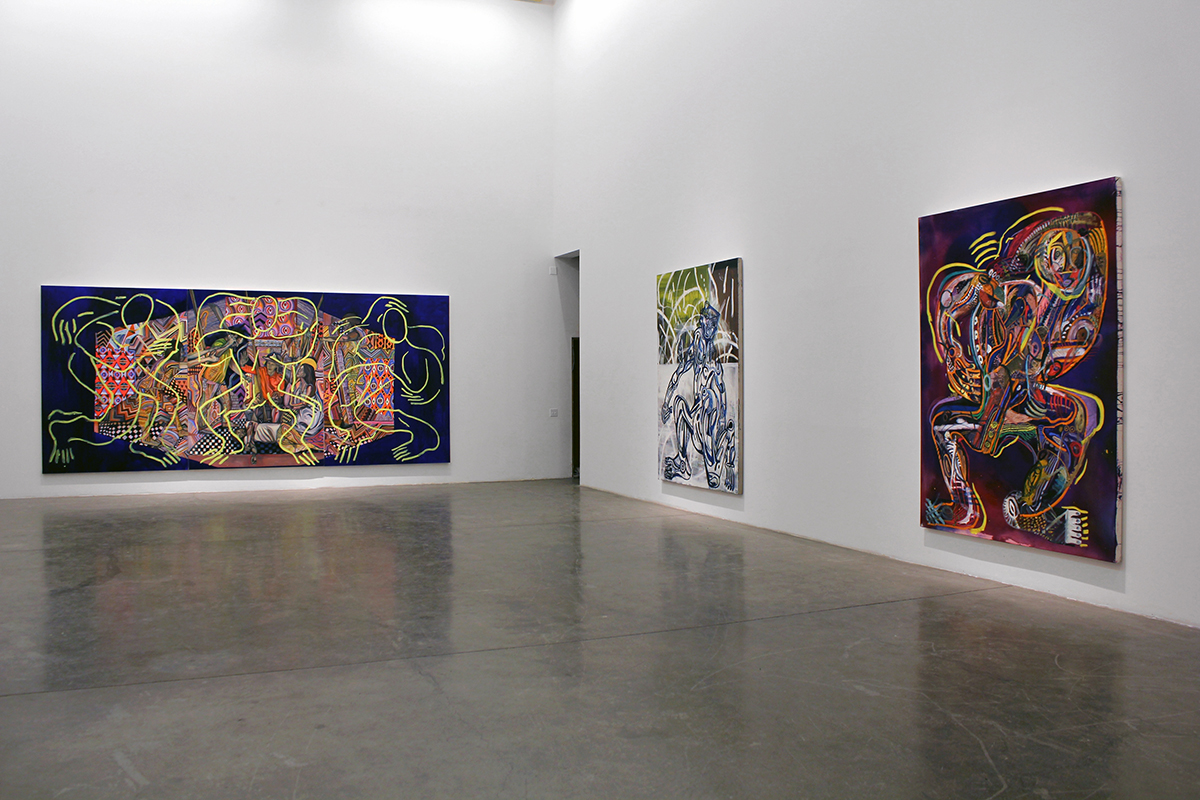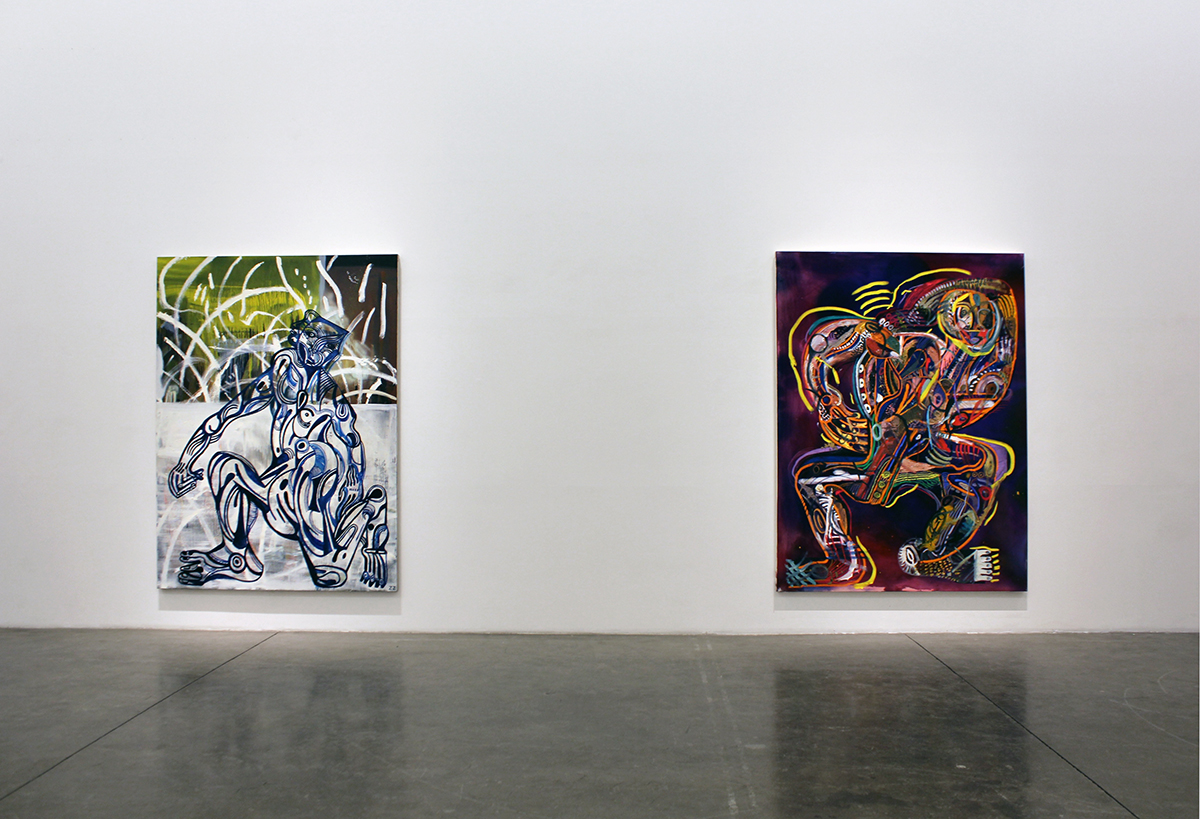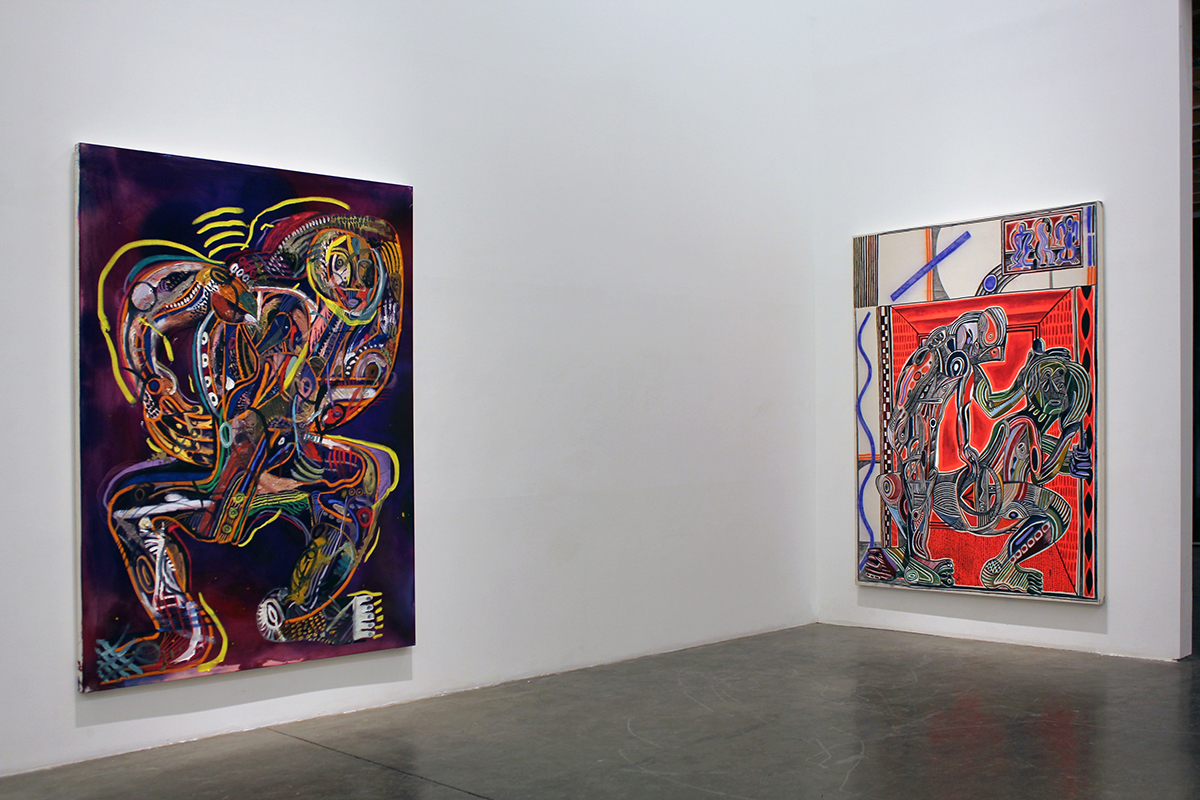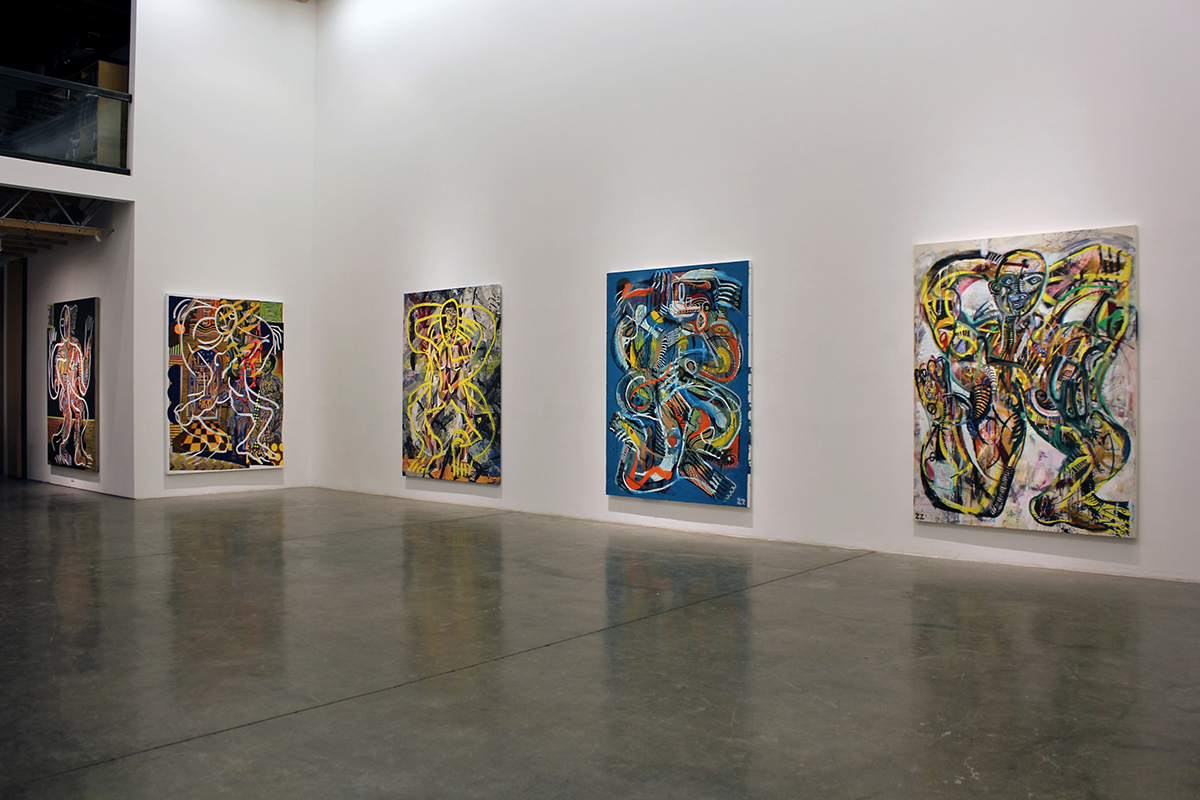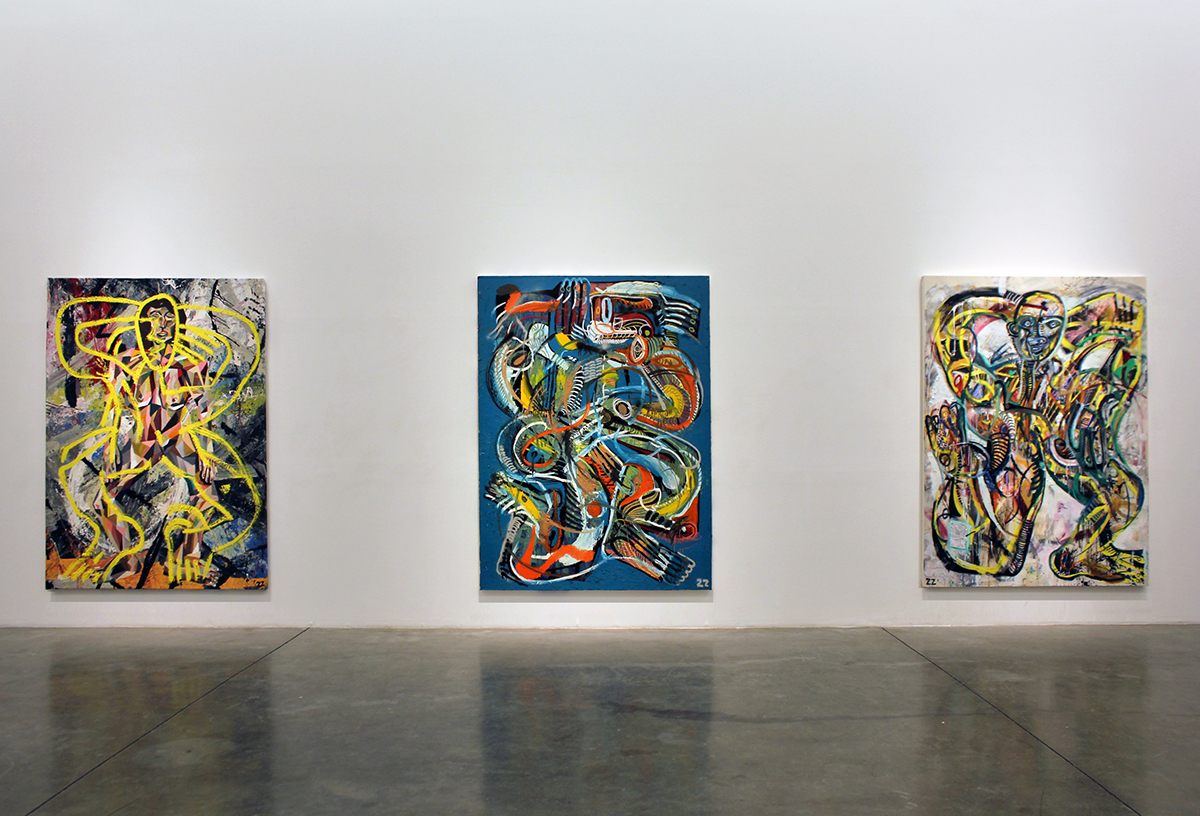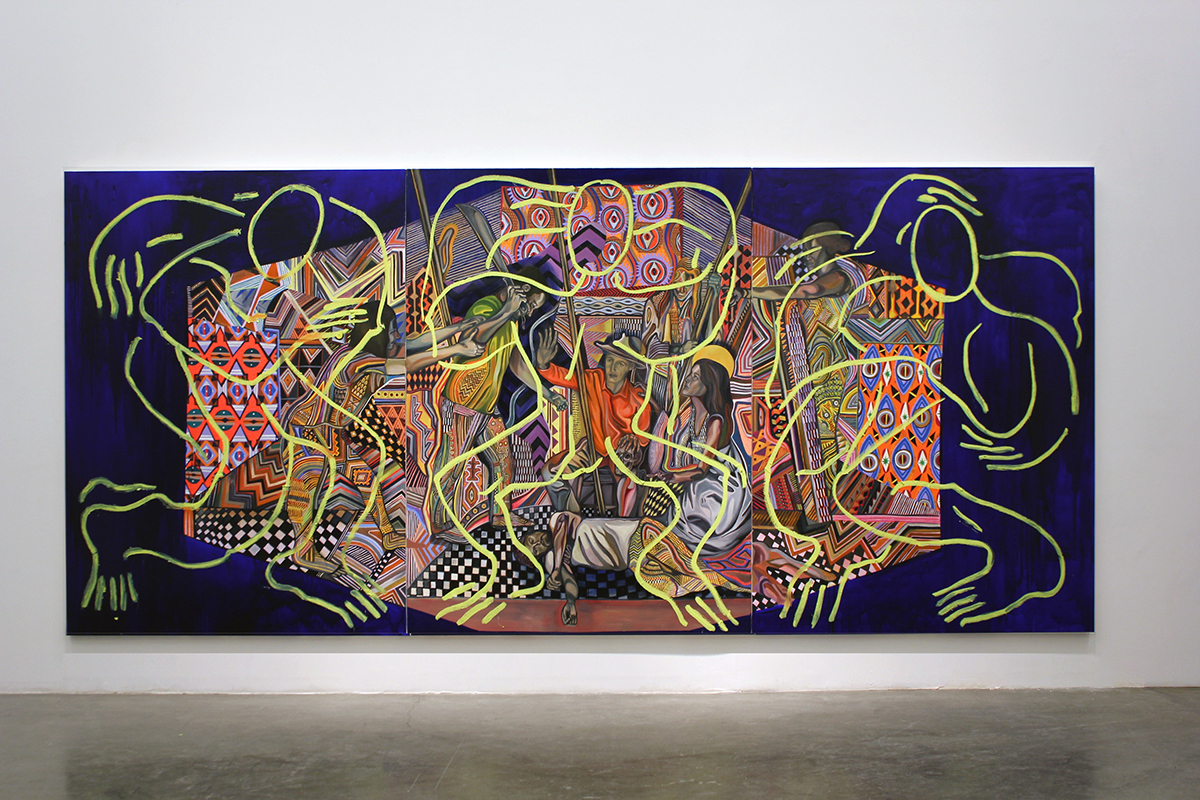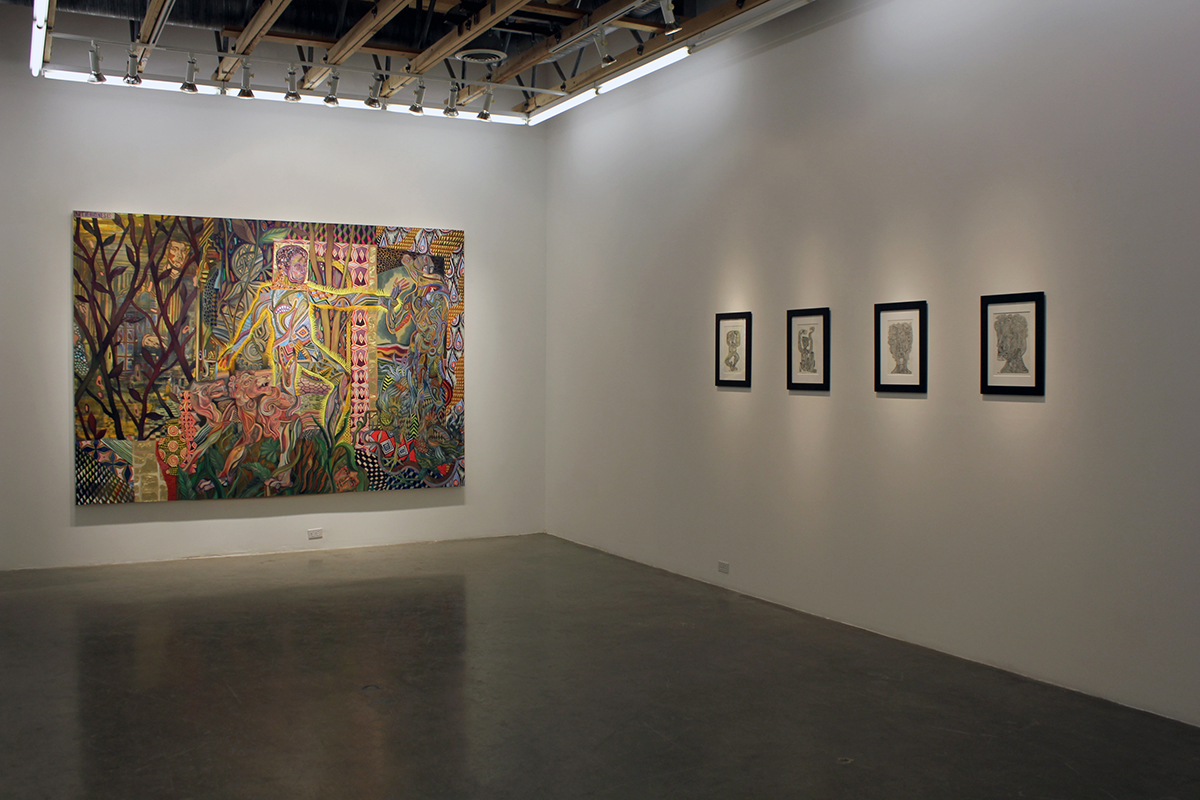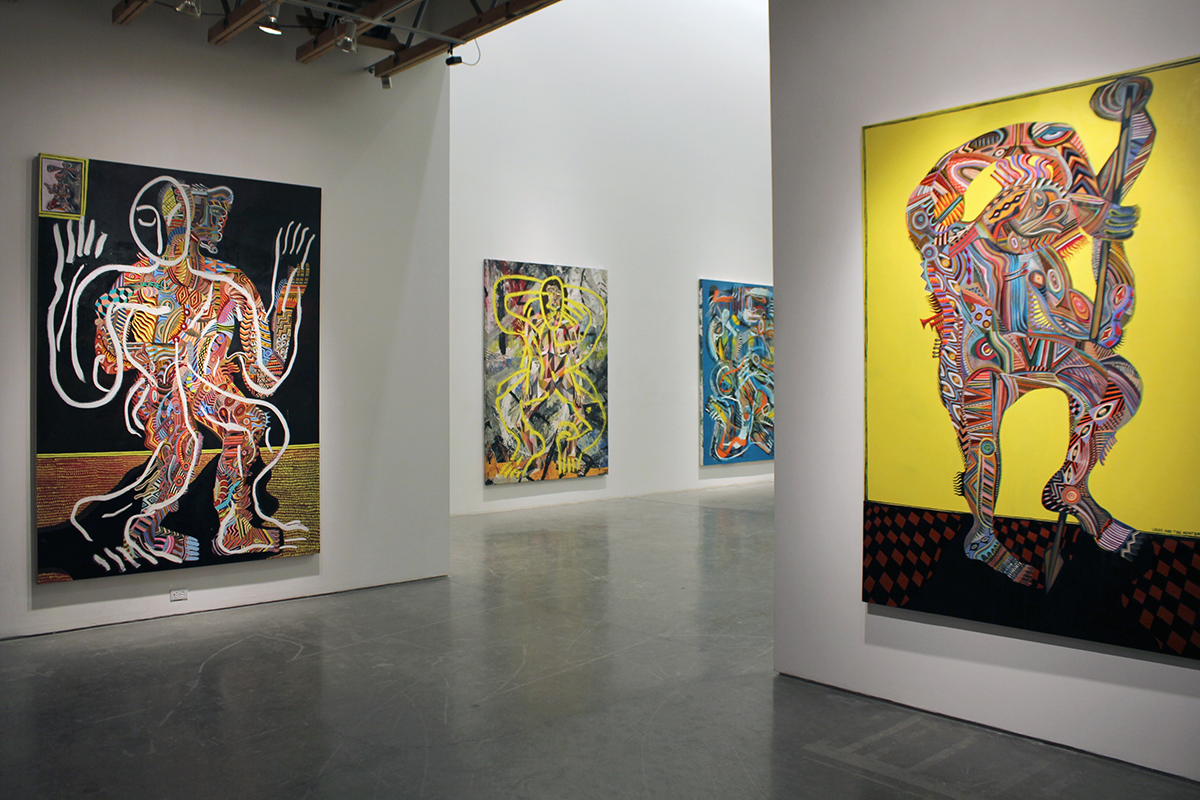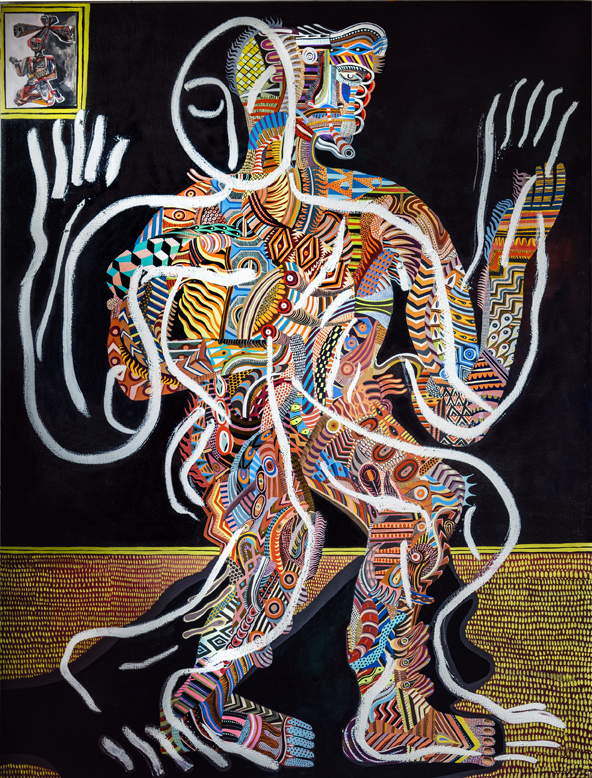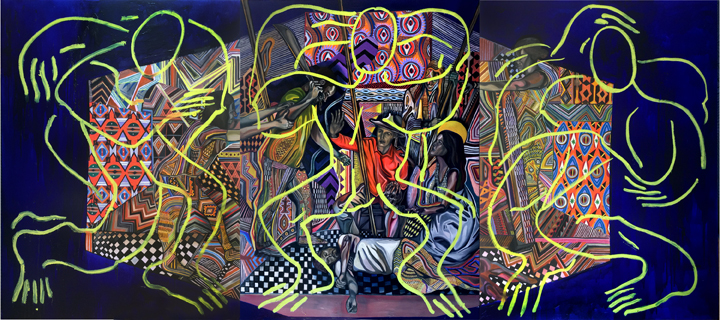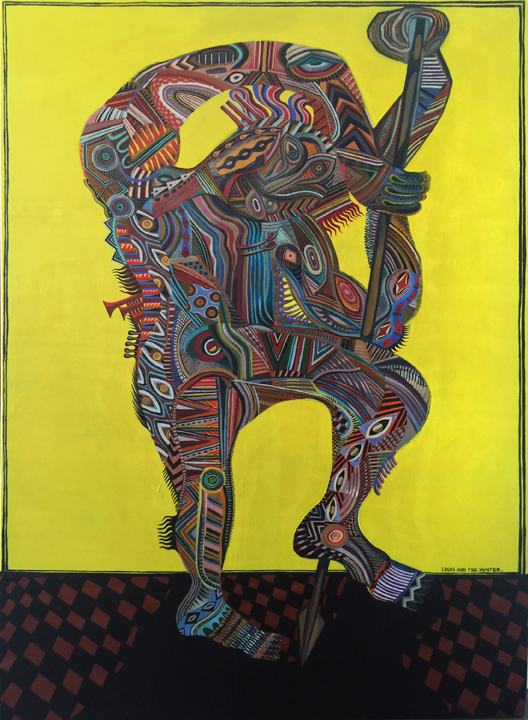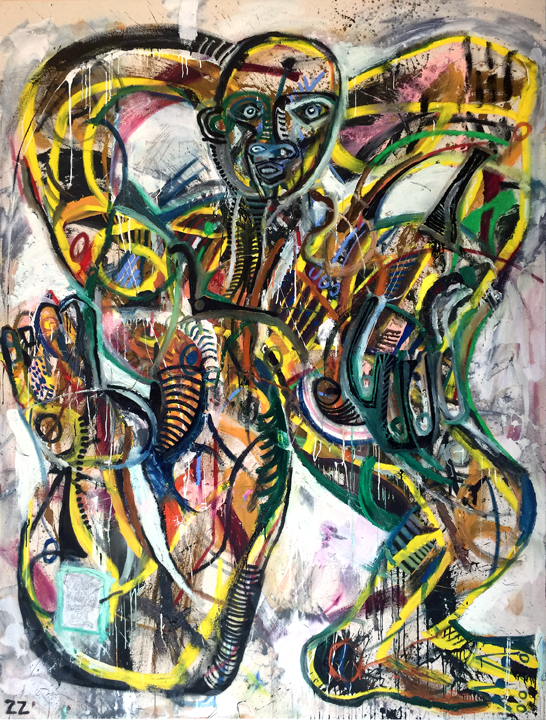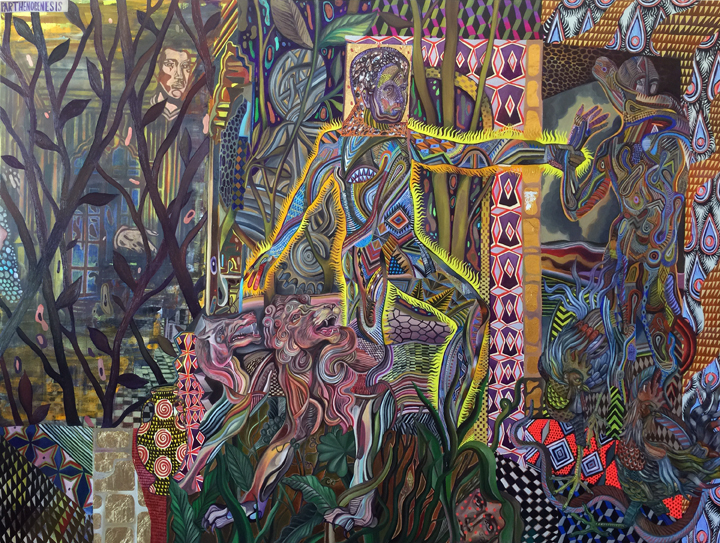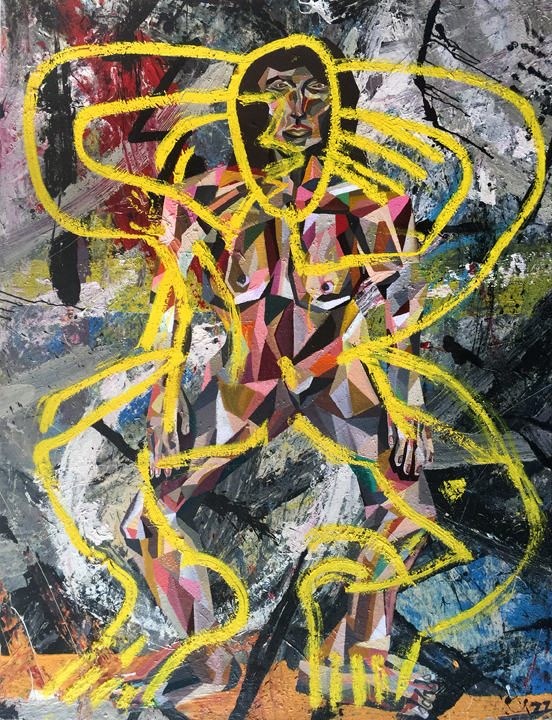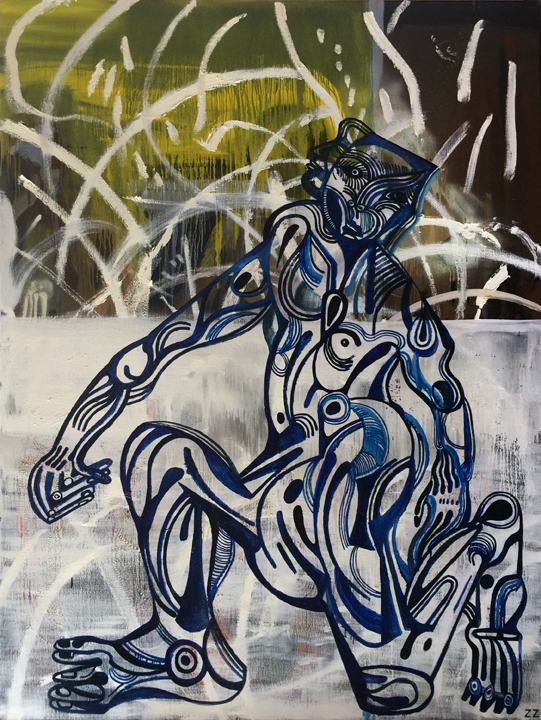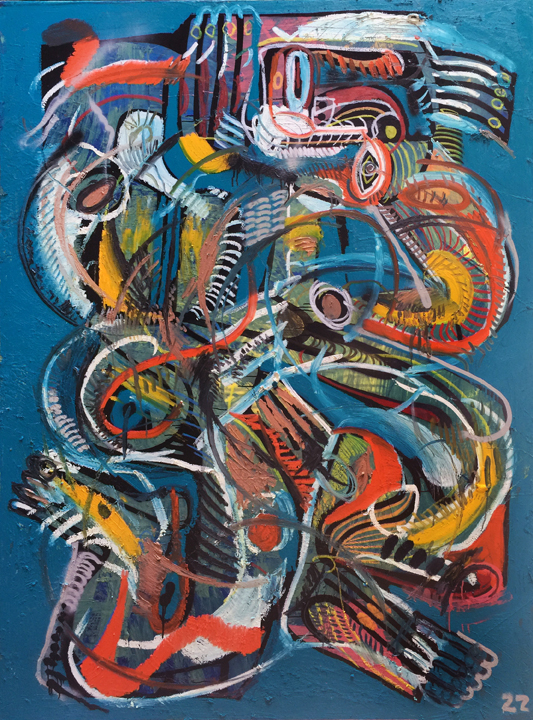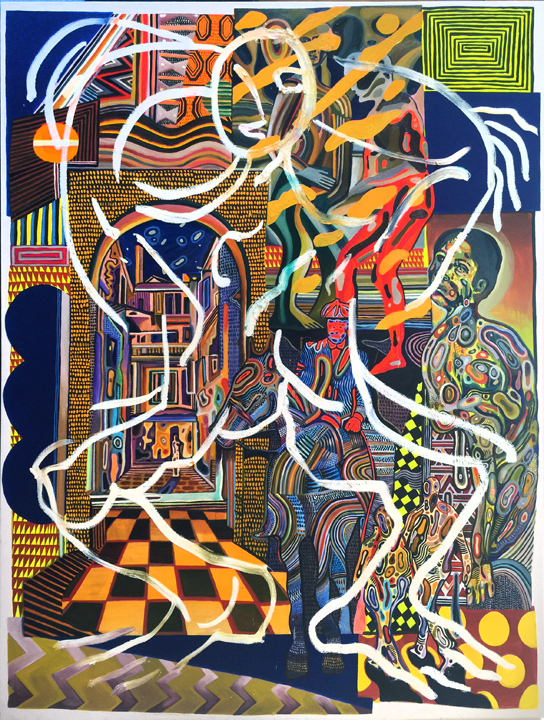ZIO ZIEGLER
It is said that without the orientation of trees and landmarks, bees lose their way and, in turn, are incapable of pollinating all the flowers in the field. This disorientation, it seems, is also present in our culture today. Yet, we continue building and maintaining our culture, squandering the landmarks that once served as maxims and touchstones guiding us to purpose and truth.
Maybe it’s an issue of saturation or self importance, but the same "cultural" engines generate too much, attempting to gratify us in the most immediate and topical fashion, so that the structure itself, like Marx's view of capitalism, is becoming top heavy. With the heightening of the formulaic and the omnipotence of big data, that which has an individual and unique voice can disappear under the waves of social media influences and reality TV personalities that are simply destabilizing reality further with every action. If the pre-internet world was once seen as a stage and we were all players, now we are all instantly qualified as the directors of our own realities. Today, the entry barrier to fact and truth is simply a matter of how much social traction we have. This poses a dilemma in which, since the origins and the outcome of information are obscured and so quickly sensationalized and forgotten, how can anything have a truly visceral impact upon us?
I’m not a puritan, but simply study the rise of casual and vulgar nudity on the web, the tools which help abbreviate literature, the increasingly simplistic and didactic formatting of cinema and the attention span of the western world, and then tell me that we have not lost our way to the flowers. For very little seems sacred anymore, and with our evolution into creatures of the instant, we have nearly taken a epigenetic cultural shift away from even being able to discern what is real, or to process and believe it when we see it.
Look back to the rise of critical theory in painting, academic language ruling over classical technical skill, and then cross-reference it with the popularity of television. It is well known that Clement Greenberg was a major reason behind the success of Jackson Pollock. In that disruptive period of art public opinion was increasingly influenced by TV. Maybe the masses, tired of suffering with the responsibility of interpreting what they didn’t understand, felt it was safer, easier, to hand the authority for their opinions over to the ‘more qualified experts’, the critics. Perhaps, this is when we, the American public, began to take a back seat to our own instincts, outsource our aesthetic opinions to assimilate into the Normal.
Now, plot this trajectory of passivity in opinion alongside the invention of the internet as it spawns the teenage art critic who believes he is capable of discerning, from a small mobile screen, the true quality of a painting. With his likes and comments to the masses, and the reduction of art into image and image into pixels, there are no longer scions of truth to navigate by. For we, as likers and commenters, are all qualified to be the critics, the democratized digital gallerists of tomorrow. With social influencers supplanting critics, desensitizing and molding public opinion, I beg to ask the question, how is art in its most authentic raw humanistic form still relevant? It once took years of education and exposure to art history to cultivate taste. Now, with a public reared on mostly Kitsch and the simplistic, ‘artists’ who paint from traced photos attract as much interest as artists who paint from the imagination and subtlety of life.
So how does art in its purest form stand amidst this vast passive, yet superficially engaged culture? This series of paintings hopes to address and prompt a dialogue with the questions previously stated. It is my hope that by painting from a place of emotion, a place of confusion and curiosity, a place of exploration, the viewer can feel the authentic journey of each canvas. That if the game of painting is no longer purely conceptual, perhaps it is on a trajectory to be absolutely human.
It is my desire for these pictures to serve as a lifeline out of the lethargy of media consumption; to break form, provoke thought and simulate experience through the surface of a canvas. That, perhaps the paintings that are not over explained, hyper contextualized, and frustratingly displaced by their academic language can serve as seeds within the consciousness of the viewer. That, in a mimetic form, they will grow virally as they are viewed. That the realities of the canvas, can serve as emotional portals to make the viewer feel, think and find a coherent resonance with an artist they need know nothing about.
These works are painted to be truly subjective paintings. I have my rational in making each, but am reluctant to poison the objectivity of the viewing experience with my ideas. In many ways, these pictures simulate the time they are created in and attempt to go a few steps further. They have no accountability in their maker. As easily as you can open a new internet profile, I can paint in a new style. As fast as you think you can decrypt what I am trying to say, a new message will arise. These paintings are existential devices, fractal in nature, that geometrically expand when tampered with. These are pictures that elude singular definition. You must go back into your life and open a discussion around what the painting means to you. There is no right answer, just as there is no singular truth. They are built to be as impossible as the origins of the emotions they come from.
For ages human beings have rendered pictures, music and poetry around subjects which were just on the tip of their tongue, subjects that, like the grapes of Tantalus, which were always just out of reach. Their attempts are what formed the building blocks of cultural identity. The ability of some to somehow reach closer to the truth that many felt allowed their work to become the pillars, landmarks, of future attempts towards a similarly Sisyphean task. However humanity always seemed to revel in delayed gratification, until recently. Today, with little left to the imagination, who will form the future pillars, the next landmarks in the search towards this impossible task of sculpting the identity of the human condition? So this show, in all of its styles and figures and scenes and gestures, is as a closed journal with a page of two peaking out of the side, hopefully tempting the viewer. The purpose of this journal is not to define the journey for you, but instead to prompt you to find clues which will bring you inside of your own experience with the works themselves. They are but mirrors, some convex and some concave, depending on your projections into the works. These are paintings are ladders back to the dichotomy between easy and difficult perception, that vast space of the ‘aha moment’ where contradictions unite. That epiphany, like the grapes of Tantalus, that you relish but can never entirely have, unless you allow the painting to work on you as you work on it.
Like the endless stories in “Arabian Nights” these paintings are composed from my experience but released in a way to keep you engaged towards your journey into your own consciousness. They release just as much as they need too, when you least expect it. They are experiential pictures that, hopefully, resist abbreviation and photography, pictures that make you feel compelled to argue for your interpretation. They are antidotes to the predictable, which I'm sure has worn as thin for you as for me. They can only exist in a quantum-like world, which cannot be extracted from itself.
For me these paintings are open source hieroglyphics – artifacts of globalization, pieces that demand answers from their viewers’ lives. As the artist I am simply the creator of a lock to which you have the key, a creator of questions and devices for provoking narratives and capturing moments that would otherwise be forgotten in your life. It is your job, as an active viewer, to expand upon the questions the paintings beg, and in that process begin a journey towards a truth that can never be spoken as such. For as objects to orient ourselves by on this path, they will serve as reminders of the existential imperative and a device in order to change perspective.
